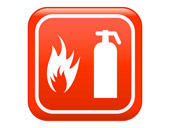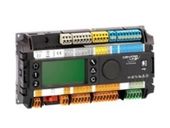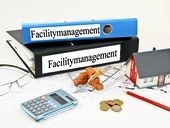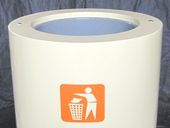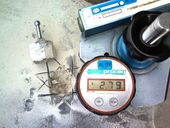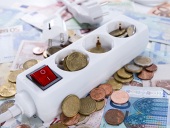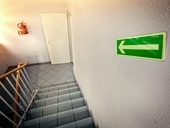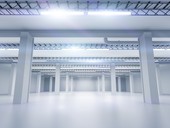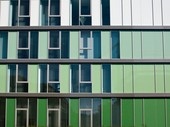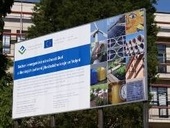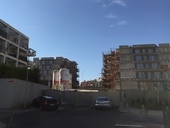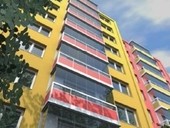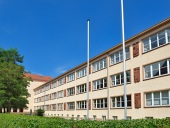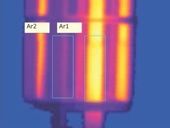This paper proposes statistical methods for evaluation quantitative performance determinated by tests of building products for objective decision during conformity assessment / certification in a fire protection field. The procedure is applicable for other types of products, and research / development of new material products.
Archiv článků od 25.5.2015 do 30.11.2015
This paper describes the controller functions, types of control units and from which all components can be composed. Next part is about explaining how to program the controllers can take place, what are the types of controlling and communication protocols that are most frequently used for connection to field devices and supervisor. The whole interpretation is conducted through first theoretical introduction followed by practical example. The whole paper is written exclusively on control units, which are used in building automation and belonging to the group DDC (Direct Digital Control) systems. These controllers are most often used to HVAC systems (Heat, Ventilation and Air Condition). The aim of these systems is to achieve thermal comfort in buildings. The whole industry is then called Measurement and Control. Specific application is e.g. controlling of Air handling unit according to pre-defined project.
In a previous article we described current problems of district heating. Their creation is shared by all stakeholders - customers, suppliers and the state. The only difference is that while consumers and suppliers are more or less at the mercy of events, the state is the one who will decide on the future success or failure of the sector. And in this role still failing. The state should support the heating industry, but instead he openly harms.
In this article is focused on the user's possibilities of the influence of the building value associated with the leife cycle. On the example of building a house techniques are utilized facility management. Designed there are four deigned variants for which are calculated itemized budgets, the energy consumption of the building and other cost of life cycle of the building. At the end of there are these variants compared and the result implies which one is the most suitable for a future user.
Research, development and testing of materials and safety features used to protect civilians and armed forces against terrorist or military attacks are more than desirable nowadays. Therefore, our work is aimed at absorption materials that can temper impact energy and shockwave energy originating in explosive blast.
Out of many materials potentially suitable for experiments, two groups of fillers were chosen – macro fillers and micro fillers – and a two component polyurethane binder. In this article, the resulting physico-mechanical characteristics are summarized: bulk density, flexural, compression and impact strength. The crucial test for determination impact energy absorption was the Split-Hopkinson pressure bar test, conducted with most samples.
Concrete exposed to high temperature considerably changes its properties down to total destruction. The paper describes renovation of concrete floor damaged by a fire of a factory building. Individual steps of determination of damage of concrete floor structures caused by high temperatures are described. Structure of damaged floor was technically analyzed, redevelopment was designed and renovation works were carried out.
The introduction of energy management according to ČSN EN ISO 50 001 becomes a topic that attracts more and more attention of involved people nowadays. There are two reasons for that. The first one is the possibility of obtaining a higher subsidy from the OP PIK, the second is the obligation by the law, respectively the possibility of reducing the administration in the future.
Owners of residential buildings and their tenants must ensure the implementation of some activities on the technical and fire safety devices in order to ensure their safety and functionality in use. Inspections and checks are therefore not just binding on the applicable regulations, but also may prevent damage to health and property.
Wilful attack targeted on strategic buildings and critical infrastructure can pose significant thread to property and human lives. By modification of the material traditionally used in building industry, in particular by addition of randomly dispersed fibre reinforcement in currently most spread building material – concrete, the enhancement of the blast and ballistic resistance can be effectively achieved without high additional costs. Within the research works presented in this article, the influence of several types of fibre reinforcement on the blast resistance of the concrete panel was assessed. The results of real blast tests indicates, that incorporation of any type of fibre brings enhancement of the blast resistance of the concrete, but the level is highly affected by strength and shape characteristics of the fibre.
The article reports on the reasons of soil waterlogging, impact of ground water on structures, and on drainage systems and measures to eliminate the waterlogging effects. Furthermore, there is an information about pertinent requirements of statutory regulations and two schematic maps of waterlogging of soil in the Czech Republic are shown.
The article describes floor surfaces and form of their determination in construction and other fields, such as services, real estate, valuation, facility management and more. In Europe, each country has a different technical standard. This means that when we are determining the type of floor area for buildings with these technical standards, we can conclude that they differ by up to 30 %. Therefore, we chose a sample idea of building on which we symbolized each floor type. We tried to make clear, which constructions and types of floor are creditable and which are not. To demonstrate the importance of correct identification of floor surface we give an example calculation of cleaning services where savings could be seen in the correct determination of the floor surface.
This article aims to grab the wear of buildings in terms of significant quantities by the scheme, which will be shown that the essential quantities affecting the problem on the object. Wear of buildings is an important concept in real estate valuation, because every building has its use and degrades over time due to aging and the degradation or wear is reflected in the final determination of the value of construction and plays an important role in calculating valuation and especially cost method valuation. Wear of buildings closely related to the life expectancy of a particular type of construction provided routine maintenance and life expectancy of the individual structures and equipment.
The paper deals with complex solution of heating and economy measures regarding ecology of heat sources and preservation of architectural values of the Volyně college-complex. This solution also includes padding warm and exchange of windows in all complexes. New technology in boiled room was installed with application of boiler for fytomass-burning, gas condensation boilers, thermal pump in system air/water and cogeneration unit for supply electric energy.
The effort is most builders to get the cheapest project documentation and stamp for start of construction. Little attention has been paid to its proper location. Construction practice is to sit as close to the fence with a neighbor to remain more space for the garden. It should be noted that, under the refers to the construction of any building works that arise construction or assembly technology, regardless of their technical construction design, used in building products, materials and construction, the purpose and duration of use. Under construction is also considered to be a product performing the function of the building. It does not matter if the building is connected to the ground as often by professionals and lay people hear.
Part I of the article is a general discussion of the current laws covering the institution called “smlouva o dílo” (the “contract for a work”). It discusses the issue of defining the work, which has changed relative to the old Civil Code in that the work no longer needs a material expression. It also discusses the options for setting a price for the work, as well as the concluding of such a contract without setting a price. There is a detailed section on budget-based price determination, which is especially useful in the construction industry.
Facility management belongs to one of the most important methods, significantly contributing to enhancing the competitiveness of organizations in the European Union. But only if, facility management services are performed efficiently. To assess the effectiveness of facility management exist within the EU common methodology or standardized methods for data collection for evaluation. To achieve the evaluation of products and services Facility Management was created – European standard 15221-7 Guidelines for benchmarking performance.
According to the statistics of the Fire Rescue Service of the Czech Republic, fires in apartment houses are among the most frequent tragedies. Therefore, it is necessary to pay them due attention. Their cause is often the incorrect execution of building construction disrespecting fire safety aspects.
The paper deals with measurement of high surface temperatures by thermography method. The author verified by several experiments the theoretical assumptions of usability of contactless measurement of high temperatures. The experimental verification is focused on spectral sensitivity range of contactless devices and on application of special coating on measured surface. The ending of the paper is devoted to the influence of boundary conditions on the accuracy of the measurement.
zpět na aktuální články
